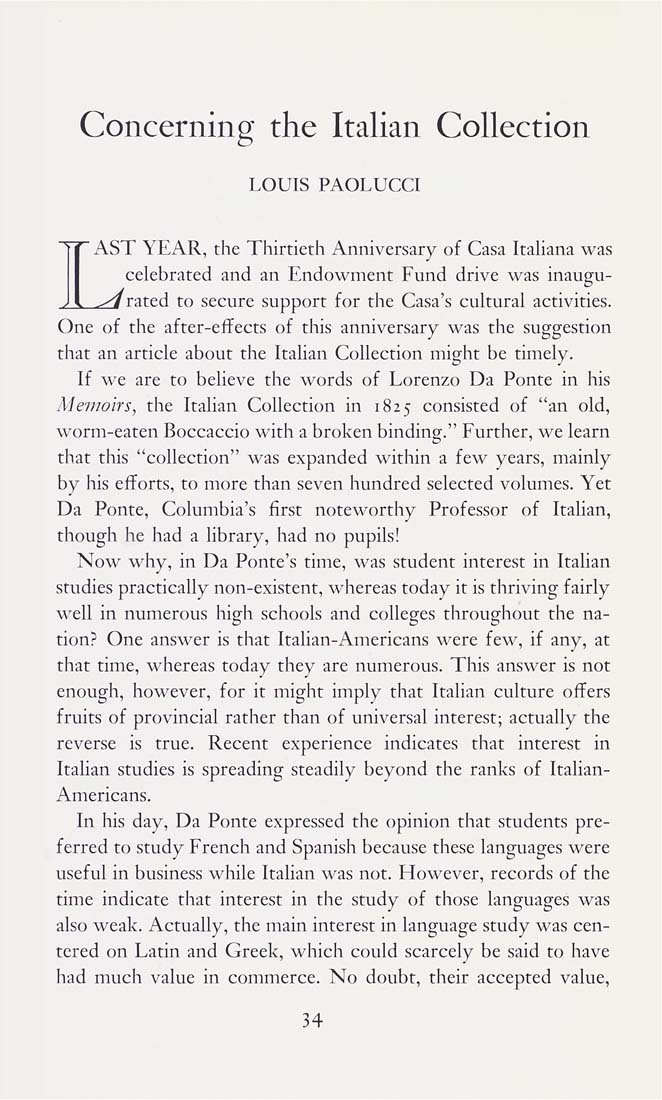Columbia Library columns (v.7(1957Nov-1958May))
(New York : Friends of the Columbia Libraries. )
|
||
|
|
|
|
| v.7,no.3(1958:May): Page 34 |

Concerning the Italian Collection LOUIS PAOLUCCI IAS AST YEAR, the Thirtieth Anniversary of Casa Italiana was celebrated and an Endowment Fund drive was inaugu- ^arated to secure support for the Casa's cultural activities. One of the after-effecrs of this anniversary was the suggestion that an article about the Italian Collection might be timely. If we are to believe the words of Lorenzo Da Ponte in his Memoirs, the Italian Collection in 1825 consisted of "an old, worm-eaten Boccaccio with a broken binding." Further, we learn that this "collection" was expanded within a few years, mainly by his efforts, to more than seven hundred selected volumes. Yet Da Ponte, Columbia's first noteworthy Professor of Italian, though he had a library, had no pupils! Now why, in Da Ponte's time, was student interest in Italian studies practically non-existent, whereas today it is thriving fairly well in numerous high schools and colleges throughout the na¬ tion? One answer is that Italian-Americans were few, if any, at that time, whereas today they are numerous. This answer is not enough, however, for it might imply that Italian culture offers fruits of provincial rather than of universal interest; actually the reverse is true. Recent experience indicates that interest in ItaUan studies is spreading steadily beyond the ranks of ItaHan- Americans. In his day, Da Ponte expressed the opinion that students pre¬ ferred to study French and Spanish because these languages were useful in business while Italian was not. However, records of the time indicate that interest in the study of those languages was also weak. Actually, the main interest in language study was cen¬ tered on Latin and Greek, which could scarcely be said to haye had much value in commerce. No doubt, their accepted value, 34 |
| v.7,no.3(1958:May): Page 34 |







